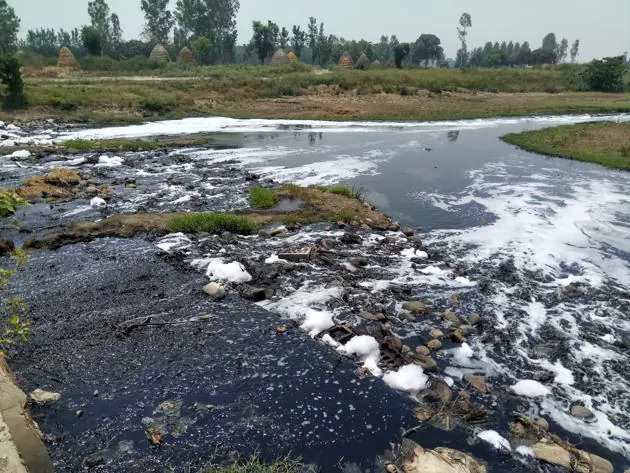SATISH HANDA
Both Yamunanagar and Jind districts in Haryana state has been identified highly polluted in the state according to World Air Quality Report -2020 having air quality index (AQI) generally ranging between 200 to 400 particular matter (PM) and both these towns have been identified highly polluted among 20 top polluted towns in the world. According to AQI, PM level of a area between 0-60 micro gram (MG) is safe and not harmful for health. However PM level between 61-90 MG is usually normal, PM level between 91-120 MG is harmful for health, PM level between 121-160 MG is very harmful for health, PM level more than 161 MG is extremely harmful for health and PM level more than 400 MG is dangerous for life and may cause serious heart and respiration problems.

Industrial twin city Yamunanagar- Jagadhari situated near Yamuna and Markanda rivers have more than 2000 industrial units to manufacture plywood and metal utensil manufacturing units releasing plenty of black smoke from boilers in plywood industries and smoke as well as poisonous chemicals from furnaces in metal industries causing severe harm to residents health in the area who blame Haryana State Pollution Control Board (HSPCB) as well as district administration responsible for neglect and not taking action against such industrial units.
Information reveals, the town Yamunanagar is facing severe pollution in-spite of the fact there is Kalesar National Forest spread across 25000 acre area and Wild Life Century Forests spread in over13000 acre area in the district. Geological data of the district having 1756 square km area which include 32.39 sq km thick forests, 89 sq km medium forests, 82.36 sq km open forests and 193.36 sq km green area have sufficient greenery. If we have an eye over recent past scenario the forest area has been reduced by 0.64% at present as compared to year 2017 in the district. The residents of area blame district administration as well as HSPCB officers for not taking action against industries releasing pollution in the air as well as harmful chemicals thrown in drains and rivers flowing inside the town. However, burning crop remains in agriculture fields and garbage in open in residential areas is another prominent reason for increase in pollution. Information reveals, 248 farmers in Yamunanagar district were fined amount worth Rs 6,35,000 allegedly burning crop wastes in open last year.
In-spite of been declared backward industrial area in the state, Jind district ranks 13th among highest polluted towns in the world having large number of patients suffering from lungs, respiratory and heart disorders in the district due to fast reducing trees in the area and illegally functioning of large number of small factories burning seven to eight ton condom tyres daily during late night hours to produce oil used in hot mix plants and cement industry thus releasing harmful gases in the atmosphere including Carbon Monoxide, Sulphur Oxide and injurious chemical particles accumulating in the atmosphere as such Air Quality Index reaches above400 Micro-gram. Residents of Jind blame HSPCB and district administration for not taking stern action against illegal factories as well as brick kilns violating directions.
Information also reveals, nearly a lakh trees were removed in the district in past five years to widen national highway and construction of roads between Jind-Rohtak, Jind-Karnal, Jind-Gohana and few others in past few years. According to HSPCB officers, the department fined several tyre burning units and other industries in the area violating rules and moreover no new license has been given to any such industrial unit since after year 2018.





